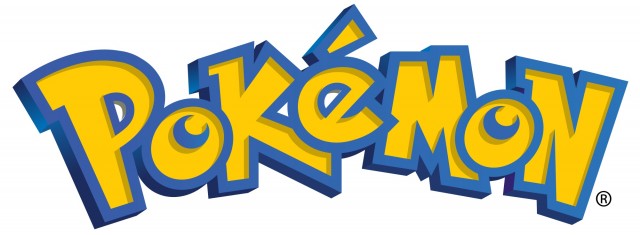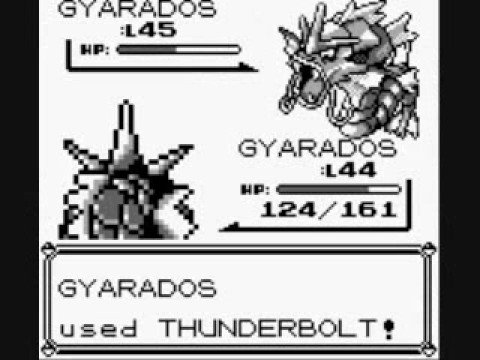
|
In honor of the recently launched Pokémon celebration series Pokémon Origins, we’re going to take a look at the two games that started it all; Pokémon Red Version and Pokémon Blue Version. Sit back and learn about the men behind the game, their inspirations, and how Shigeru Miyamoto somehow found a way to leave his indelible mark on the franchise!

Like Nintendo, Game Freak’s origins are far less technology-based than one would think. Satoshi Tajiri started Game Freak in 1981 as a fanzine devoted to gaming. Self-produced and distributed, Tajiri’s magazine had a small but dedicated following. Among Tajiri’s readers was a man named Ken Sugimori, whom he eventually met and formed a strong friendship with. Sugimori eventually became the main illustrator for the magazine, but as time went on, Tajiri decided to end the venture in order to focus on learning game programming. The two men linked up as business partners and transitioned Game Freak from game publication to development company in 1989. The company’s first game was Mendel Palace, a NES action-puzzler. While not the most amazing title, Game Freak had caught the attention of Nintendo, specifically renowned designer Shigeru Miyamoto. Miyamoto took Tajiri under his wing, becoming something of a mentor to the fledgling creator and also giving him access to a couple of Nintendo franchises to create games around. From this deal came puzzle game Yoshi and a Japan-only Mario game for SNES called Mario and Wario. Things were looking up for Game Freak, but something had been percolating in the background of Tajiri’s thoughts that was going to forever change things for him and Nintendo.
The lightning strike that would become Pokémon had hit Tajiri’s mind when Square released The Final Fantasy Legend for Nintendo’s Game Boy. Up to that point, the Game Boy had been a runaway hit, but it was a system known more for action and puzzle games than anything else. What Legend proved to Tajiri was that, if done right, any genre could find a home on Nintendo’s portable. Along with Sugimori, Tajiri began looking at the Game Boy’s unique features and experimented with how best to deliver a video game experience unlike any other. Tajiri was an avid bug collector and arcade game aficionado in his adolescence, and he would draw heavily from his past while conceptualizing Pokémon. The Game Boy’s ability to link with other systems struck a chord with Tajiri, inspiring thoughts of a new type of game where players could collect and exchange things between one another. When pre-development work began on Tajiri’s collecting/trading-idea, the friends knew that it was something special, and after much brainstorming, they presented their proposal for a game called Capsule Monsters to Nintendo. Nintendo had enjoyed working with the two before and, impressed with Tajiri and Sugimori’s proposal, agreed to fund the game’s development.
Tajiri’s vision for the title had a rock-solid core, but the finer details are what shifted most during development. The name Capsule Monsters was itself a hurdle, as Tajiri knew that players would shorten the title and Capumon just didn’t have a good ring to it. Throw in the fact that Game Freak was having a hard time trademarking Capsule Monsters and the name just had to go. After some deliberation, the name Pocket Monsters was settled upon; it didn’t hurt that it shortened well to Pokémon. Pokémon doubled for the name of the game and the monsters, and now Tajiri and Sugimori just had to figure out how many of the creatures to make. Originally, the developers came up with over 200 different Pokémon, with the intention of whittling away the weaker designs and saving others for potential sequels. Sugimori collaborated with a very small team to come up with the appearance of all the Pokémon, but the final design for each was done by himself. Despite all the love for fan-favorites like Charizard and Pikachu, Lapras, Rhydon, and Clefairy are actually the first Pokémon that the team created! Players were originally intended to lure Pokémon through a system called Charisma and maintain relationships with the creatures similar to pets. Tajiri and company tinkered with the idea, and in the end believed that catching the Pokémon in (as previously titled) “capsules” and developing a bond more akin to allies was the better way to go. Tajiri and Sugimori were firing on all cylinders, but there was something missing and Shigeru Miyamoto knew what it was.

Nintendo’s legendary developer had the perfect idea for Pokémon; split the game into two. Miyamoto knew that the game would have a great appeal to children and that the trading aspect would result in many families buying multiple copies. In an effort to bolster the desire to engage in trading and make the experience even funner, Miyamoto posited that creating two versions of the game, each containing different Pokémon, would do the trick. Tajiri agreed, and the game became two titles; Pokémon Red Version and Green Version. When the games hit Japan, Miyamoto’s suggestion was spot-on, as Pokémon sold millions of copies and the two variations caused a trading frenzy amongst players. Nintendo had not just a hit, but a veritable phenomenon. The only question that remained was whether or not Pokémon‘s appeal could translate to players abroad.
Preparations for Pokémon‘s trip to the US were meticulous and calculated. Nintendo poured bushels of cash and resources into marketing for the games, believing that Pokémon would need a strong push to find its audience. One of Nintendo’s more brilliant ideas was branding the games with the ingenious tagline/challenge “Gotta Catch ‘Em All!”, which perfectly conveyed what made Pokémon special. Still, there was hesitation on the part of the Western localization team, who feared that the cute nature of many of the creatures would not be appealing to American gamers. The localization team suggested re-designing the Pokémon to be more menacing, but Nintendo President Hiroshi Yamauchi disagreed, feeling that the games could be successful as they were if handled properly; what was wildfire in Japan could surely be in America, too. The translated versions of Red and Green prepared for the US were based on the code from Pokémon Blue (a modified follow-up to the original two games), which is perhaps partially the reason why NoA decided to name the games Pokémon Red Version and Blue Version when they debuted in 1998. For all the trepidation and debate internally at Nintendo, when Pokémon finally landed in the US it went from a hit at home to an international superstar.
It’s easy to take Pokémon for granted now, but its impact both on Nintendo and the video game industry is uncanny. Gaming always had a social aspect to it, but Red and Blue took it in a new direction. Like baseball cards, kids everywhere found pals and forged friendly rivalries through their new mutual interest. What’s particularly special about Pokémon is just how engrossing the series became across multiple genres of entertainment. The trading card game, cartoon show, toys, and movies all captured the attention and imaginations of people as much as the games themselves. What’s more, the longevity of Pokémon is equally impressive; 15 years after Red and Blue were released in the US, Pokémon’s popularity continues unfazed, to the point of being nearly self-perpetuating. What Tajiri and Sugimori touched on with Pokémon is as timeless as Super Mario or Mickey Mouse. Pokémon crosses generations of players in a way that few franchises of any sort can, to the point now that many people are trading the titular creatures with their own kids. Pokemon‘s positive messages about friendship, respect, diligence, and harmony with nature also set Red and Blue apart from many other games of its era, and has continued to do so all the way through to Pokémon X and Y.

Sadly, the original versions of Pokémon Red Version and Blue Version are only available on the Game Boy. Nintendo has failed to release either game on the 3DS’ Virtual Console up to this point, and there’s little indication that this will change anytime soon. While we keep our fingers crossed for wireless Red and Blue Pokémon trading, Nintendo did release spectacular remakes of the two games for the Game Boy Advance. Called Pokémon FireRed Version and LeafGreen Version, the two games are wonderful recreations of the originals and perhaps more accessible to recent series adopters. Do yourself a favor and experience these first two, amazing installments of the Pokémon series any way that you can!




 ShareThis
ShareThis







